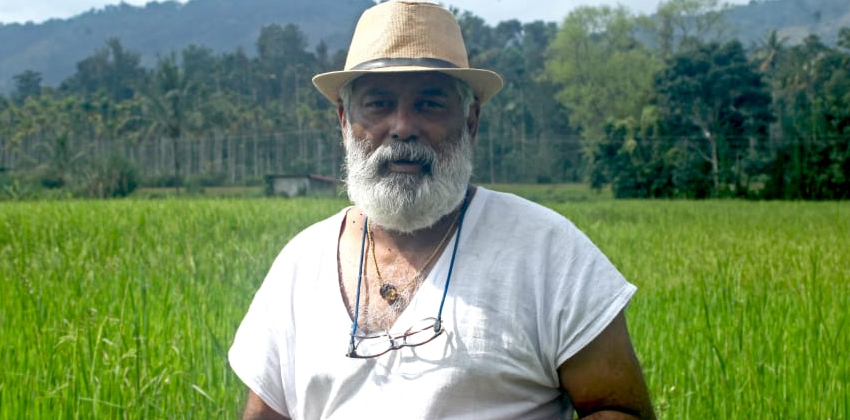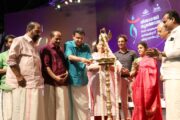Wayanad’s terrain offers natural social distancing, may boost its stock after pandemic: Vancheeswaran

Wayanad is a destination which ideally should cater to high volume-low traffic tourism, says Wayanad Tourism Organisation (WTO) President KR Vancheeswaran in an interview. The other challenge is connectivity. Wayanad is still dependent on the Calicut airport which is one of the oldest airports in Malabar. However post-Covid, Wayanad will rise as a safe domestic destination to visit, says Vancheeswaran. Excerpts:
Q: Wayanad is one of the most attractive tourist destinations in Kerala. But now unfortunately Covid-19 has struck the world and with it global tourism will also be impacted. Can you please give us a sense of how much Wayanad has been affected by the lack of tourist flow due to the pandemic?
A: Wayanad has been a fluctuating tourist destination. In fact, it had started climbing up the ladder only in the last 5-6 years before being faced with nature’s fury in the form of consecutive floods, dengue, Nipah and to nail it all, Covid. The funniest part is we all got into tourism because of a very bad agrarian sector which was going through lot of turmoil because of price fluctuations and climate change. Tourism was the second biggest revenue earner for the district. Besides small-time growers, there are a lot of small-time people who depend on it- jeep drivers, auto drivers, cabbies, shop owners etc. We are all still hoping that we will be able to comeback once things settle down.
Q: How did Wayanad do last year in terms of tourist arrivals? How will it be this year?
A: We have been having crests and troughs in the last two years because of nature’s fury that unleashed itself on a small district like Wayanad. The footfalls have been good, bad and very bad and things have not been smooth. Definitely not for a small destination with 90% of the units under the MSME category. Definitely plenty of support was needed immediately after the 2018 rains which lay quite a lot of hopes shattered. It has been a topsy-turvy curve that has been happening in Wayanad with regard to footfalls. I would say our destination banks on Bangalore especially the IT sector. So weekends and long weekends are mostly full. Week days are empty. Cost of input for maintenance is very high which results in slightly higher pricing in the most of the properties without which we would not be able to do anything.
We had zero occupancy in many places during monsoon but we were able to get some amount of footfalls during June, July, August and September. From October the domestic and inbound season starts. Our inbound footfalls are negligible when you compare with the arrivals into Kerala. So I would say we would still classify ourselves as a market which caters to domestic market.
Q: As a hospitality player, what are the specific challenges faced by the sector here in Wayanad?
A: We face multi-faceted challenges. One issue is connectivity of the destination. We are still dependent on the Calicut airport which is the one of the oldest airports in Malabar. But it has not been really given its due. In fact, the number of flights that arrive there from different destinations within India is very poor. Connectivity to central India is pretty bad. Then the rain brings up its own woes, creating problems in the Ghat section. Mysore airport is opening up, maybe that is something that we can look up to. Kannur airport has also improved flight connectivity to a great extent. It can be classified as blessing in disguise that when you have high connectivity your footfalls are going to rise, but then it can be sometimes be detrimental to the growth of the destination in terms of volume. I still feel that Wayanad is a destination which ideally should cater to high volume-low traffic tourism. Unfortunately, that has not been the case. Besides that, most of the resorts, homestays and hotels are small and medium enterprises. I think we have hardly two or three properties which have 50 or 60 rooms and all the others are in average category with about of 25 -30 rooms. There are classic properties having their own uniqueness and naturally that comes with a bundle of limitations in terms of money when it comes to marketing. That is the reason we have the association that I represent – Wayanad Tourism Organisation (WTO) – which takes up collective marketing. Though we all are competitors we come under one umbrella and try to market the destination trying to increase the size of the pie, that is the tourism market in Wayanad. When the pie grows the share also grows. That is the concept that we work on and it has worked very well. In fact, it wouldn’t be an understatement if I say that WTO is one of the pioneers wherein competitors come together to market a destination, of course with the support from district administration and Kerala tourism authorities irrespective of the government in power, from year 2000.
Places are far flung but at the same time this also makes destination Wayanad unique especially post Covid. If you really look at it you don’t have big crowds so you have the place to yourself and you don’t have to worry that you are going to catch some pandemic or illness unlike in a very crowded destination. Here the terrain helps to socially distance oneself.
Q: Wayanad has lost a bit of its cool climate over the years. How do you see this? Will it affect tourism? If so, what can be done to restore the cool climate? May be, it’s due to increasing pollution and poor waste management.
A: I think it’s not specific to Wayanad alone. It’s been happening all over the world, as global temperatures have been rising. Thanks to man’s greed we have been successfully decimating nature in our mad run behind materialistic things. I think pandemics like Nipah or Covid probably tried to put some break to reality. Yes, there has been a significant increase in temperature in places like Wayand. When I was young the winter temperature in Wayanad was around 10 degrees Celsius. There was mist everywhere. Post 10 am you could see the sun in the morning and by 3:30 pm you could see mist coming in again. This starts from November and continues until end of February. But now winter temperature rarely dips below 12 degrees. Mist is seen rarely. Rains used to be so beautiful, but we never had strong intense rains. The rains used to be unending from month of May probably until end of October. Now these have changed basically because of certain land utilisation patterns which definitely is not because of tourism. Loss of tree cover in the adjoining reserves is another issue. We used to have a lot of bamboo around. Bamboo was really working as an air-conditioning unit which sort of filtered the hot air from the Deccan plateau, from getting into the Western Ghats through the Bandipur wildlife sanctuary. There have been reports that surface temperature of Wayanad has increased. Studies are still in progress and not yet completed.
Besides this we have contributed by way of quarrying and things like that which have resulted in the change of climate. To a small extent tourism has also caused it. Most of the tourism entrepreneurs, even the smallest ones, know that people come here to enjoy the climate. So definitely nobody wanted any destruction. Real estate has been one which has been singularly responsible for loss of trees. Now people have realized after the heavy rains that they need to get back to the old ways of conserving whatever tree cover we have.
Waste and garbage disposal have never been a big problem in Wayanad. One reason is we have smaller properties; secondly, we have a whole district which is a destination unlike places like Kochi where waste can quickly get concentrated. I think most of the newer property owners have been sensitised on these issues. Especially with Covid raising its head, I think health and hygiene will become very important in a country like India but much less in Wayanad.
Q: Do you think we can make use of this time to provide training to the staff? Basically, offer some help to update themselves about the sector, provide soft skills training etc.
A: Most of the people who work in Wayanad in the resorts and homestays are from the neighbouring districts. We also have quite a lot of people from Assam and northeast who work in the front office or in the housekeeping department and a few others from Tamil Nadu and Karnataka too. I have seen most of them, especially in the lower rungs, are not typically trained in hospitality management but they are nice, simple guys whom you can train in basic etiquettes of housekeeping or services, probably with the exception of front office where you need lots of communication. All the other jobs these guys can do with lot of sincerity. The middle rank or the HODs and top rank management staff, are all from the neighbouring districts and states and most of them have gone back to their districts and states. So training them may not be possible at this point in time.
Q: What steps do you think the government can take to protect ecotourism in Kerala?
A: I think the entire district of Wayanad is an eco-tourism destination because of the plantations. Our biodiversity is our treasure. It is the duty of every entrepreneur here to preserve his property or plantation as a ecotourism destination because that’s why people come here.
The government should study the number of footfalls in a particular destination and develop alternative destinations. This would take pressure off popular and unique destinations. Classical example I would relate to is the safari which we have in both Wayanad wild life sanctuary south that is Muthanga and Wayanad wild life sanctuary north in Tholpetty. The south adjoins Bandipur and north adjoins Nagarhole. In both these places you have an entity called as Jungle Lodges and Resorts which is run by Karnataka which provides real good experience in safaris as compared with what we have to offer in Wayanad. It’s not that we don’t have same number of animals or the ambience. We do have probably much better ambience. Most of the elephants from Karnataka move into Wayanad during summer time, so our sighting is much better. I would say Wayand is the best place where you can sight elephants in whole of Kerala, not even Thekkady. Same for tigers. Wayanad has got the highest number of tigers in Kerala (76 tigers as per the last census). Still Wayanad wild life sanctuary has not been declared as a tiger reserve. I think politicians will have to look at it in the right perspective, especially now because of the deluge that has happened. I think such conservation issues have to be addressed by the government.
It’s a collective responsibility. People should realise it’s a fragile ecosystem. They can’t behave like they are in a mall. I don’t think it’s right to blame only the government or only the stakeholders when you want to retain places as eco-tourism destinations.
Q: Do you think the state government should take steps to offer some concessions with regard to electricity tariffs?
A: We buy electricity from the national grid during summers and therefore cost of electricity goes up and of course we are a state that doesn’t have much pressure on electricity from the regular manufacturing industry. Therefore, the government would want to make profit. The KSEB will have to show profitability. Maybe electricity tariffs can be reduced at least in the present context when we have a pandemic like this. I think we have made a request to KSEB authorities. They should try to charge us only for the consumed units during this period. Small property and home stay owners definitely should not be bracketed under commercial tariff as we call it. It should come under domestic tariff. Hope the government can intervene.
Q: What are the steps that the hotels and resorts of Wayanad can take to help it regain its old glory?
A: Wayanad Tourism Organisation (WTO) is a consortium of private property owners which was started in year 2000 as a club activity by nine of us and then it has now become an engine of success for promoting Wayanad to its present glory. Even during its formation, we had a very clear idea about not just making money. We had a lot of social ideals. We wanted to help improve the life of the common man while also giving a better experience to visitors. We also wanted to conserve nature and had a social, economic and cultural responsibility towards this place. That was part of our motto. We will ensure that we preserve the destination for the next generations to come and enjoy. We will be with the government on any measure taken to sustain and improve Wayanad as a prime tourism destination.



